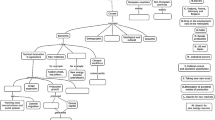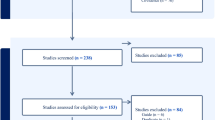Abstract
This study explores the concept of link-making in relation to communicative strategies applied in the teaching and studying of biological evolution. The analysis focused on video recordings of 11 lessons on biological evolution conducted in a Swedish 9th grade class of students aged 15 years. It reveals how the teacher and students connected classroom conversations, the frequency of references to conversations in whole-class settings, and the development of a theme focusing on species survival and extinction. Detailed examples from the data illustrate how this theme developed from its initiation during the first lesson, through discussion and clarification, to its wrapping up during the last lesson. They further illustrate how students made sense of what the teacher said and wrote, and how the teacher postponed issues, explained and developed topics, provided opportunities for link-making, organised the class, motivated students, and checked their understanding. The study’s methodological approach offers a way of including several time dimensions within research. Based on our findings, we conclude that the excerpts examined here did succeed in building ‘islands of coherence’ in the co-construction of curricular content. Moreover, the topical trajectory in relation to species survival provided opportunities for constructing a ‘scientific story’ in the classroom.




Similar content being viewed by others
References
Adadan, E., & Oner, D. (2014). Exploring the progression in preservice chemistry teachers’ pedagogical content knowledge representations: the case of “behaviour of gases”. Research in Science Education. doi:10.1007/s11165-014-9401-6.
Anderson, C. W. (2007). Perspectives on science learning. In S. K. Abell & N. Lederman (Eds.), Handbook of research on science education (pp. 3–30). New Jersey/London: Lawrence Erlbaum.
Ash, D. (2008). Thematic continuities: talking and thinking about adaptation in a socially complex classroom. Journal of Research in Science Teaching, 45(1), 1–30.
Baalman, W., & Kattman, U. (2001). Towards a better understanding of genetics and evolution—research in students’ conceptions leads to a rearrangement of teaching biology. In I. Gayoso, J. Bustamante, U. Harms, & M. Jiménez Aleixandre (Eds.), III Conference of European Researchers in Didactic of Biology. Spain: Santiago de Compostela.
Bakhtin, M. M. (1986). Speech genres and other late essays (Vol. 8). Austin: University of Texas.
Balgopal, M. M. (2014). Learning and intending to teach evolution: concerns of pre-service biology teachers. Research in Science Education, 44(1), 27–52.
Bishop, B. A., & Anderson, C. W. (1990). Student conceptions of natural selection and its role in evolution. Journal of Research in Science Teaching, 27(5), 415–427.
Bizzo, N. M. V. (1994). From down house landlord to Brazilian high school students: what has happened to evolutionary knowledge on the way? Journal of Research in Science Teaching, 31(5), 537–556.
Bloome, D., Beierle, M., Grigorenko, M., & Goldman, S. (2009). Learning over time: uses of intercontextuality, collective memories, and classroom chronotopes in the construction of learning opportunities in a ninth-grade language arts classroom. Language and Education, 23(4), 313–334.
Brown, J. S., Collins, A., & Duguid, P. (1989). Situated cognition and the culture of learning. Educational Researcher, 18(1), 32–42.
Brumby, M. (1981). The use of problem-solving in meaningful learning in biology. Research in Science Education, 11(1), 103–110.
Brumby, M. (1982). Students’ perceptions of the concept of life. Science Education, 66(4), 613–622.
Brumby, M. (1983). Concept mapping: structure or process? Research in Science Education, 13(1), 9–17.
BSCS. (1993). Developing biological literacy. Colorado Springs: BSCS.
Clarke, D. J., Mitchell, C., & Bowman, P. (2009). Optimizing the use of available technology to support international collaborative research in mathematics classrooms. In T. Janik & T. Seidel (Eds.), The power of video studies in investigating teaching and learning in the classroom (pp. 39–60). Münster, Westf: Waxmann.
Dodick, J., & Orion, N. (2003). Cognitive factors affecting student understanding of geologic time. Journal of Research in Science Teaching, 40(4), 415–442.
Duncan, R. G., & Reiser, B. J. (2007). Reasoning across ontologically distinct levels: students’ understandings of molecular genetics. Journal of Research in Science Teaching, 44(7), 938–959.
Duschl, R. (2008). Science education in three-part harmony: balancing conceptual, epistemic, and social learning goals. Review of Research in Education, 32, 268–291.
Engle, R. A. (2006). Framing interactions to foster generative learning: a situative explanation of transfer in a community of learners classroom. Journal of the Learning Sciences, 15(4), 451–498.
Ferrari, M., & Chi, M. T. (1998). The nature of naive explanations of natural selection. International Journal of Science Education, 20(10), 1231–1256.
Flyvbjerg, B. (2006). Five misunderstandings about case-study research. Qualitative Inquiry, 12(2), 219–245.
Ford, M. J., & Forman, E. A. (2006). Redefining disciplinary learning in classroom contexts. Review of Research in Education, 30, 1–32.
Gelbart, H., Brill, G., & Yarden, A. (2009). The impact of a web-based research simulation in bioinformatics on students’ understanding of genetics. Research in Science Education, 39(5), 725–751.
Green, J., Skukauskaite, A., Dixon, C., & Córdova, R. (2007). Epistemological issues in the analysis of video records: interactional ethnography as a logic of inquiry. In R. Goldman, R. Pea, B. Barron, & S. J. Derry (Eds.), Video research in the learning sciences (pp. 115–132). Mahwah, N.J.: Lawrence Erlbaum.
Gumperz, J. J. (1992). Contextualization and understanding. In C. Goodwin & A. Duranti (Eds.), Rethinking context: language as an interactive phenomenon (pp. 229–252). Cambridge: Cambridge University.
Hand, B. M., Alvermann, D. E., Gee, J., Guzzetti, B. J., Norris, S. P., Phillips, L. M., et al. (2003). Message from the “Island group”: what is literacy in science literacy? Journal of Research in Science Teaching, 40, 607–615.
Haug, B. S., & Ødegaard, M. (2014). From words to concepts: focusing on word knowledge when teaching for conceptual understanding within an inquiry-based science setting. Research in Science Education, 1–24. doi:10.1007/s11165-014-9402-5.
Hubber, P., Tytler, R., & Haslam, F. (2010). Teaching and learning about force with a representational focus: pedagogy and teacher change. Research in Science Education, 40(1), 5–28.
Jiménez‐Aleixandre, M. P. (1992). Thinking about theories or thinking with theories? A classroom study with natural selection. International Journal of Science Education, 14(1), 51–61.
Kampourakis, K., & Zogza, V. (2008). Students’ intuitive explanations of the causes of homologies and adaptations. Science & Education, 17(1), 27–47.
Kampourakis, K., & Zogza, V. (2009). Preliminary evolutionary explanations: a basic framework for conceptual change and explanatory coherence in evolution. Science & Education, 18(10), 1313–1340.
Klette, K. (2007). Trends in research on teaching and learning in schools: didactics meets classroom studies. European Educational Research Journal, 6(2). doi:10.2304/eerj.2007.6.2.147.
Klymkowsky, M. W., & Garvin-Doxas, K. (2008). Recognizing student misconceptions through Ed’s tools and the Biology Concept Inventory. PLoS Biology, 6(1), e3.
Knippels, M.-C. P. J. (2002). Coping with the abstract and complex nature of genetics in biology education: the yo-yo learning and teaching strategy. Utrecht: University of Utrecht.
Lemke, J. L. (1990). Talking science: language, learning and values (language and educational processes). Norwood, New Jersey: Alex.
Lemke, J. L. (1992). Intertextuality and educational research. Linguistics and Education, 4(3-4), 257–267.
Lemke, J. L. (2000). Across the scales of time: artifacts, activities, and meanings in ecosocial systems. Mind, Culture, and Activity, 7(4), 273–290.
Linell, P. (1995). Approaching dialogue: talk and interaction in dialogical perspectives. Report from Tema Kommunikation. Linköping: Linköping University.
Linell, P. (1998). Approaching dialogue: talk, interaction and contexts in dialogical perspectives. Amsterdam: John Benjamins.
Linell, P. (2009). Rethinking language, mind, and world dialogically: interactional and contextual theories of human sense-making. Charlotte, NC: Information Age.
Mayr, E. (2004). What makes biology unique? Considerations on the autonomy of a scientific discipline. Cambridge: Cambridge University.
McDonald, S., & Kelly, G. J. (2007). Understanding the construction of a science storyline in a chemistry classroom. Pedagogies: An International Journal, 2(3), 165–177.
Mercer, N. (2008). The seeds of time: why classroom dialogue needs a temporal analysis. The Journal of the Learning Sciences, 17(1), 33–59.
Molenaar, I. (2014). Advances in temporal analysis in learning and instruction. Frontline Learning Research, 2(4). doi.10.14786/flr.v2i4.118.
Mortimer, E., & Scott, P. (2003). Meaning making in secondary science classrooms. Maidenhead: Open University.
Ogborn, J., Kress, G., Martins, I., & McGillicuddy, K. (1996). Explaining science in the classroom. Bristol: Open University.
Olander, C. (2013). Why am I learning evolution? Pointers towards enacted scientific literacy. Journal of Biological Education, 47(3), 175–181.
Pappas, C. C., Varelas, M., Barry, A., & Rife, A. (2003). Dialogic inquiry around information texts: the role of intertextuality in constructing scientific understandings in urban primary classrooms. Linguistics and Education, 13(4), 435–482.
Posner, G. J., Strike, K. A., Hewson, P. W., & Gertzog, W. A. (1982). Accommodation of a scientific conception: toward a theory of conceptual change. Science Education, 66(2), 211–227.
Rector, M. A., Nehm, R. H., & Pearl, D. (2013). Learning the language of evolution: lexical ambiguity and word meaning in student explanations. Research in Science Education, 43(3), 1107–1133.
Roth, W.-M., Tobin, K., & Ritchie, S. M. (2008). Time and temporality as mediators of science learning. Science Education, 92(1), 115–140.
Schwendimann, B. A., & Linn, M. C. (2015). Comparing two forms of concept map critique activities to facilitate knowledge integration processes in evolution education. Journal of Research in Science Teaching, 53(1), 70–94.
Scott, P., Asoko, H., & Leach, J. (2007). Student conceptions and conceptual learning in science. In S. K. Abell & N. Lederman (Eds.), Handbook of research on science education (pp. 31–56). New Jersey/London: Lawrence Erlbaum.
Scott, P., Mortimer, E., & Ametller, J. (2011). Pedagogical link‐making: a fundamental aspect of teaching and learning scientific conceptual knowledge. Studies in Science Education, 47(1), 3–36.
Sickel, A. J., Witzig, S. B., Vanmali, B. H., & Abell, S. K. (2013). The nature of discourse throughout 5E lessons in a large enrolment college biology course. Research in Science Education, 43(2), 637–665.
Silverman, D. (2010). Doing qualitative research: a practical handbook. London: Sage.
Smith, M. U. (2010). Current status of research in teaching and learning evolution: II. Pedagogical issues. Science & Education, doi:10.1007/s11191-009-9216-4.
Southerland, S. A., Abrams, E., Cummins, C. L., & Anzelmo, J. (2001). Understanding students’ explanations of biological phenomena: conceptual frameworks or p‐prims? Science Education, 85(4), 328–348.
Tiberghien, A., Malkoun, L., Buty, C., Soussy, N., & Mortimer, E. (2007). Analyse des savoir en jeu en classe de physique à différentes échelles de temps [Analysis of knowledge at stake in physics classrooms across different time scales]. In G. Sensevy & A. Mercier (Eds.), Agir ensemble. L'action didactique conjunte du professeur et des élèves [The joint action of teaching teachers and students] (pp. 73–98). Rennes: Universitaires de Rennes.
van Mil, M. H., Boerwinkel, D. J., & Waarlo, A. J. (2013). Modelling molecular mechanisms: a framework of scientific reasoning to construct molecular-level explanations for cellular behaviour. Science & Education, 22(1), 93–118.
Varelas, M., & Pappas, C. C. (2006). Intertextuality in read-alouds of integrated science-literacy units in urban primary classrooms: opportunities for the development of thought and language. Cognition and Instruction, 24(2), 211–259.
Varelas, M., Pappas, C. C., & Rife, A. (2006). Exploring the role of intertextuality in concept construction: urban second graders make sense of evaporation, boiling, and condensation. Journal of Research in Science Teaching, 43(7), 637–666.
Vosniadou, S. (2007). The cognitive-situative divide and the problem of conceptual change. Educational Psychologist, 42(1), 55–66.
Warren, B., Ballenger, C., Ogonowski, M., Rosebery, A. S., & Hudicourt‐Barnes, J. (2001). Rethinking diversity in learning science: the logic of everyday sense‐making. Journal of Research in Science Teaching, 38(5), 529–552.
Author information
Authors and Affiliations
Corresponding author
Rights and permissions
About this article
Cite this article
Rocksén, M., Olander, C. A Topical Trajectory on Survival: an Analysis of Link-Making in a Sequence of Lessons on Evolution. Res Sci Educ 47, 451–472 (2017). https://doi.org/10.1007/s11165-015-9509-3
Published:
Issue Date:
DOI: https://doi.org/10.1007/s11165-015-9509-3




